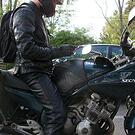I am testing a large scene with thousands of objects moving around.
Each object includes model, material, crowd nav agent. The frame rate is okay.
However, when I tried to add RigidBody to each object, the frame rate drop hugely. Even if the collision_mask is 0 and mass = 0 (static rigidbody, collide with nothing). I only need those rigidbody (collision shape) for raycast detection. So I believe it’s wasting a lot of CPU running some unnecessary physics calculation (since there is no raycast added for my test scene).
I searched a little bit about bullet physics and found
this post
. It is suggested to use btCollisionObject directly instead of btRigidBody for such cases. People confirmed this could save a lot of memory.
I believe this is the solution for my problem, but I could not find direct usage of btCollisionObject in Urho3D.
I am thinking to add one custom component Urho wrapper for it. I was wondering if anyone has done something similar so I don’t need to do it? or any thoughts?


